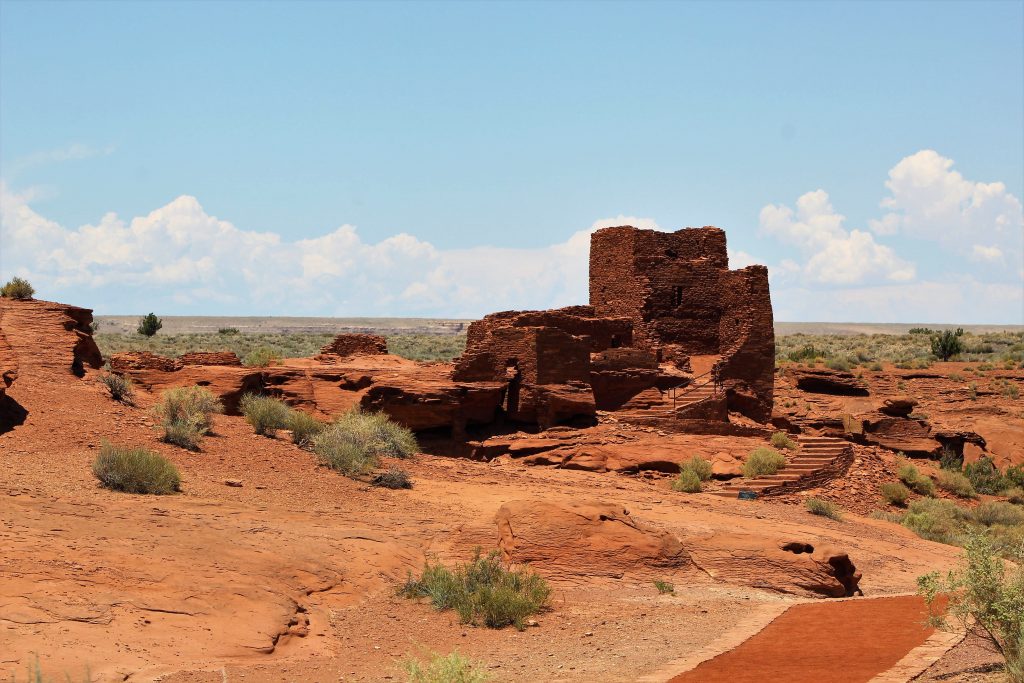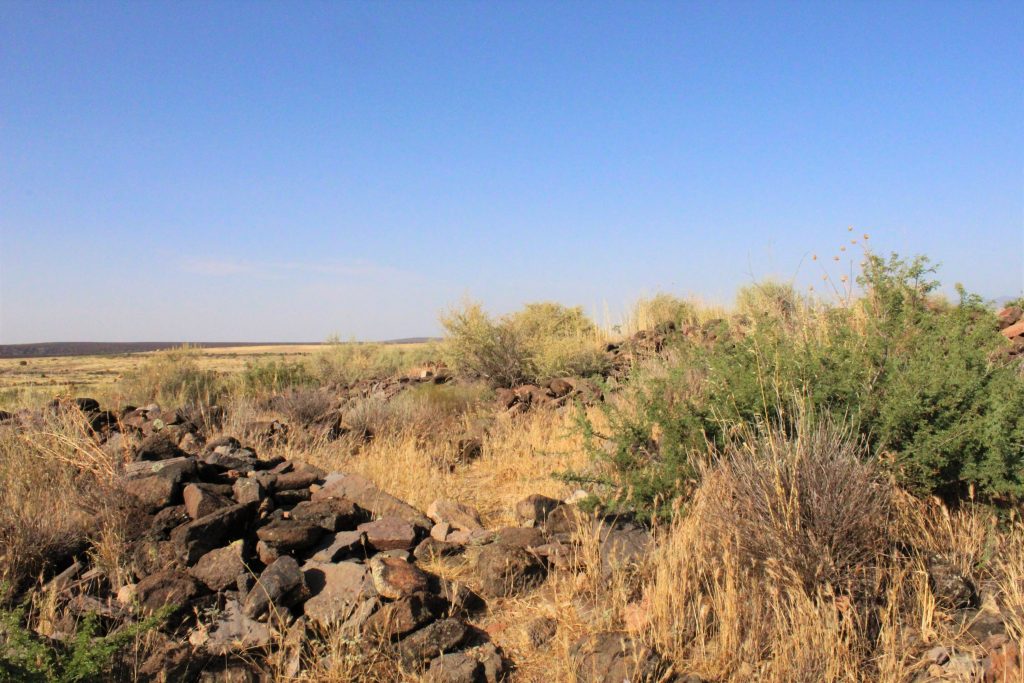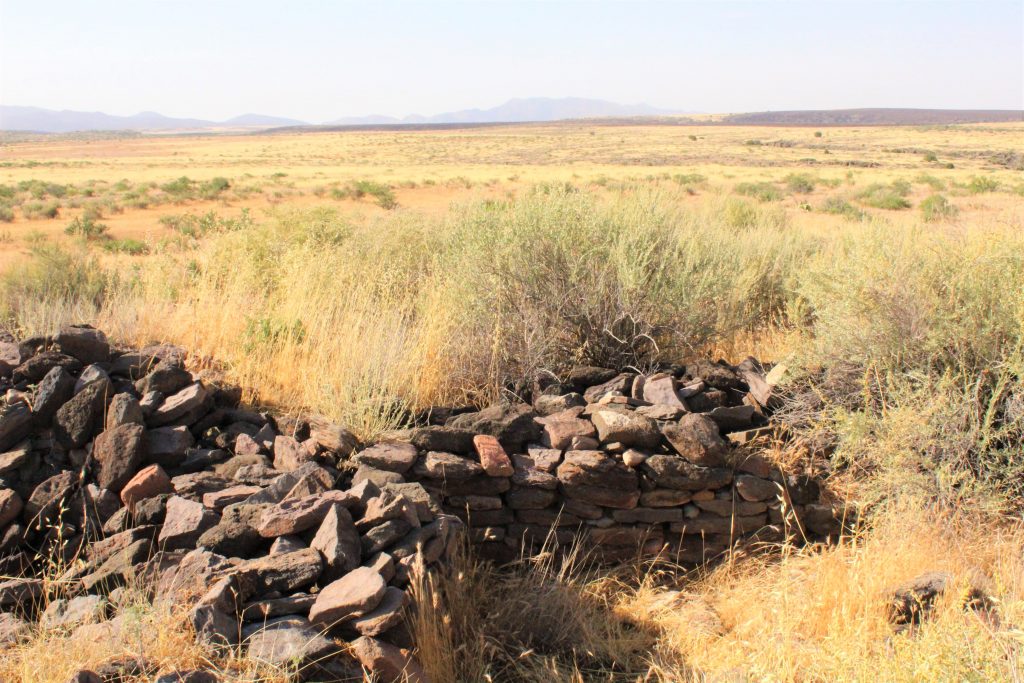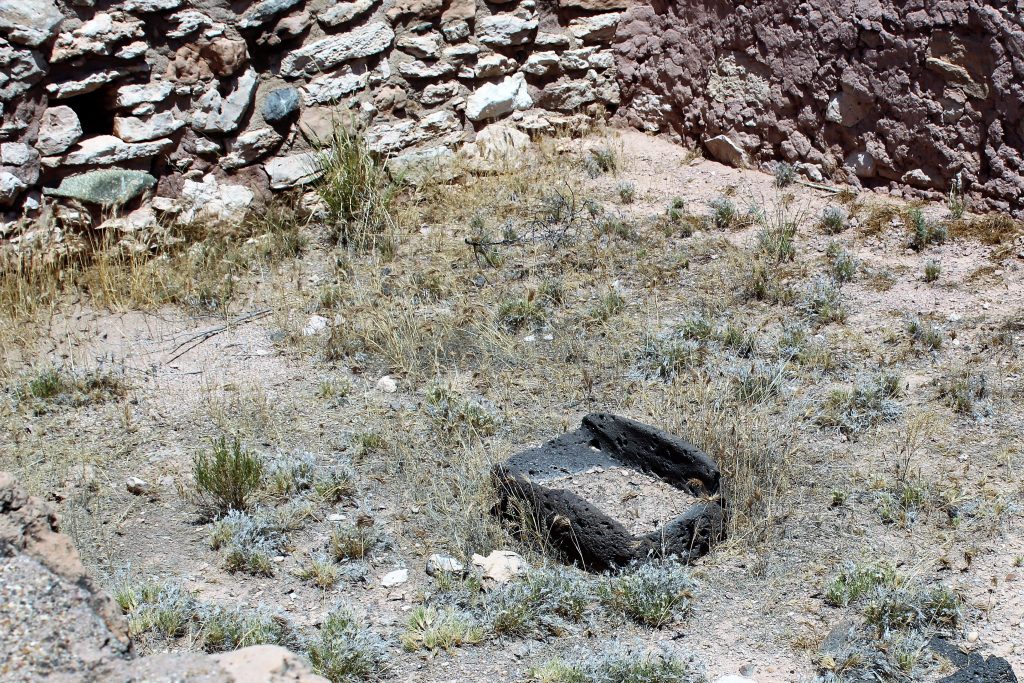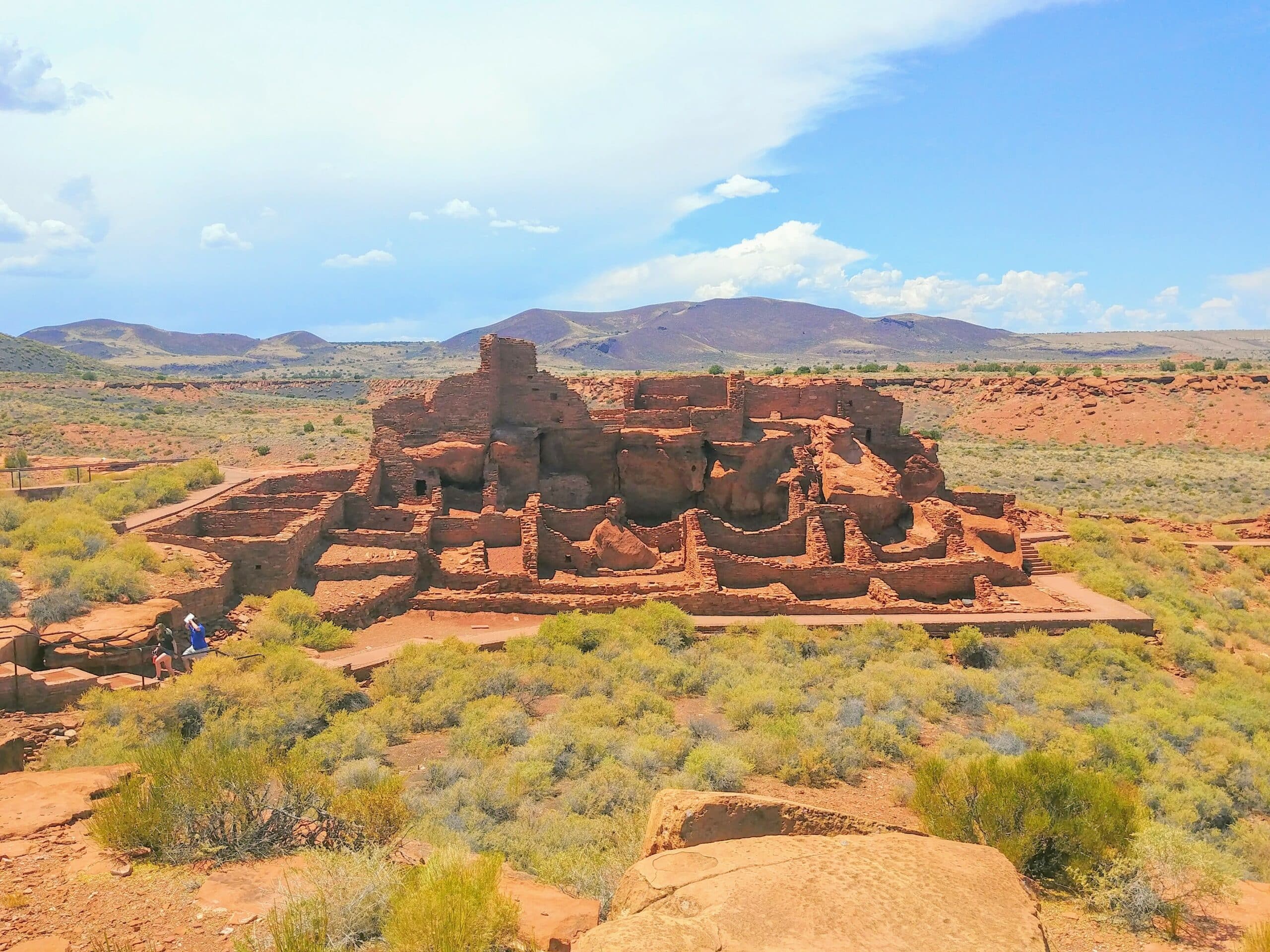Protecting Pottery and the Past
“Watch out for snakes,” my husband advises me as we make our way down the overgrown path through the wilderness of a Northern Arizona mesa. “I know, I know,” I reply, knowing that he’d be more comfortable out in front, watching for rattlers, but too excited to let him lead. I’ve driven past the sign for Agua Fria National Monument at least a hundred times in my life during trips to mountainous Flagstaff, Arizona from the desert landscape of Phoenix. Now that I’ve finally taken the time to stop and explore the area, I find that Agua Fria is a middle ground between these two places—not unbearably hot in the summer, like Phoenix, but not likely to receive snowfall, like Flagstaff. It is, I decide, the perfect place for a pre-air conditioning culture to live.
Agua Fria National Monument protects nearly 500 ancient Native American homes within four distinct settlements. Between about 1250 and 1450, the high desert landscape was divided by dozens of well-worn footpaths leading to neatly-built stone homes with tiny entrances that reflected the small stature of the Pueblo who lived here. Later, the Pueblo people abandoned them, leaving behind jars, pots, utensils, and household tools. Today, items like these are precious, studied by experts, treasured by local tribes, or housed behind glass in museums to inspire gawking middle schoolers on field trips. Sadly, however, most of these clues to ancient history have been lost due to natural factors as well as centuries of looting.
A Ruin with a View
“Is that it?” My husband points up the path at a pile of rocks that stands out against the undulating yellowed grass. I squint, trying to force my nearsighted eyes to focus. “I think so! Come on!” We’ve been hiking through the monument for some time, but we both find a new burst of energy now that we’ve discovered the treasure at the end of the trail. Happily, we climb out of the long grass onto the mound of large rocks, which suggests walls and rooms. “Wow. Can you imagine having this view?” I breathe. We look out over the high desert’s muted rainbow of colors: yellow grass, green and orange scrub, purple shadows, the deep vermillion of the canyon walls, and the bright blue of the Southwestern sky. A rabbit flashes through our view for a split second before disappearing again into the virgin undergrowth. Between the stones of the crumbled pueblo, we can see shards of pottery. I bend down and gather a few of the broken pieces in my hands. Together, we admire the variety and craftsmanship of the designs, faded black patterns barely visible against the Sedona-red clay. A few shards of white pottery created far away, whisper lost tales of friendship and trade.
Whenever I find these shattered pieces of art, I am tempted to take them home. Just one, or maybe two. Would anybody miss them? However, I can always hear my dad’s voice in the back of my head. “If you took one, and everybody who came here took one, do you think there would be any left?” My childhood excursions to ancient sites came with strict rules about stealing these vestiges of the past. We always left pottery and arrowheads where we found them, hoping that future visitors would be just as respectful. These memories rush back to me in the present, and I carefully replace the pottery shards, setting them gently on the prehistoric stones for the next visitor to enjoy.
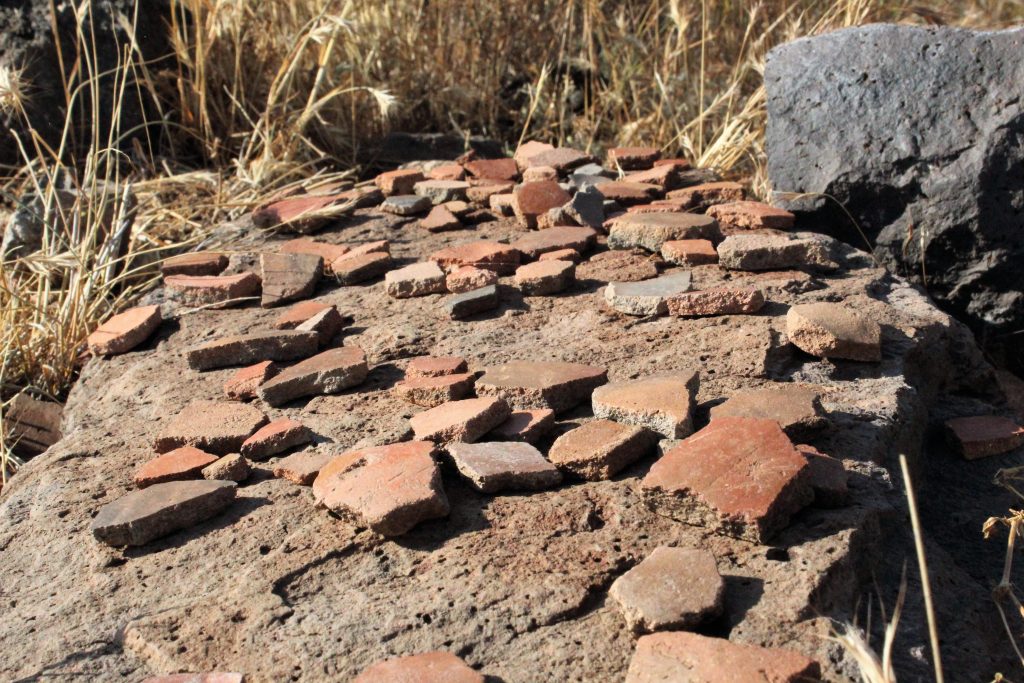
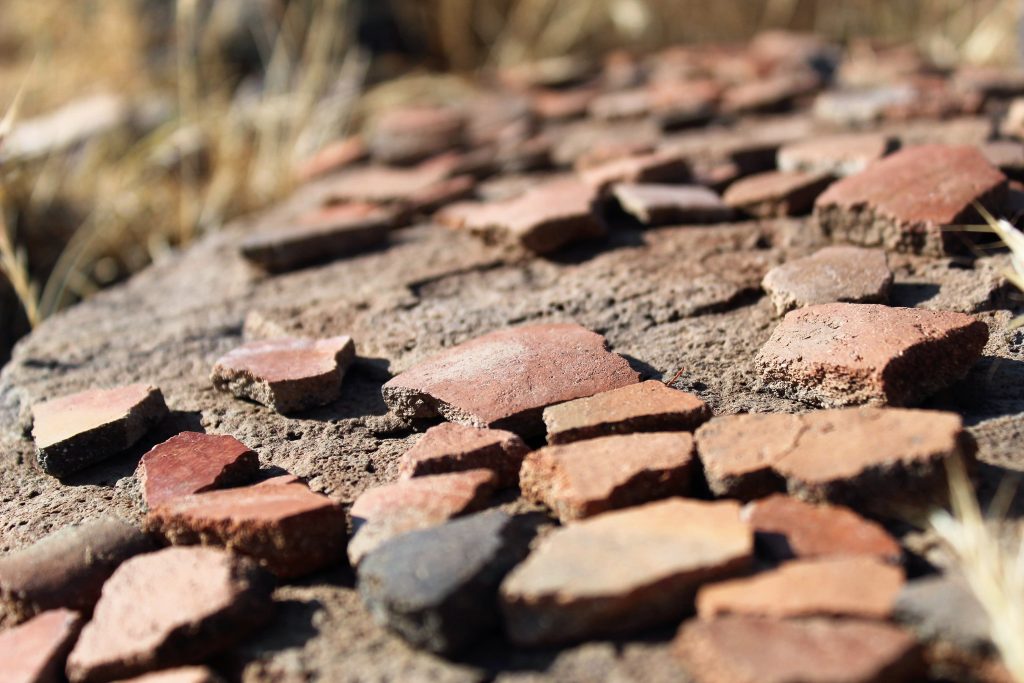
Leaving Artifacts is the Law
Leaving ancient Native American artifacts alone isn’t just good form. It’s also the law. Anything located on public land belongs to that monument or preserve. Defacing or removing artifacts can land you a year in prison and a $10,000 fine—and if you cause any damage, that goes up to five years in prison and up to $100,000 in restoration costs. Arizona’s State Historic Preservation Office (SHPO) has specific guidelines to help the public, private organizations, and archeological experts preserve these sites. Sometimes, this means burying the site in place to protect it while using the land above it for modern purposes. Other times, it means excavating the site and studying items of historical value. Any Native American tribes with a connection to the ruins are consulted and have decisive power over what happens to objects removed from the site.
While SHPO and its associates work hard to respect and preserve the past, the same cannot always be said of individuals. Despite the ready availability of authentic Native crafts created by modern tribal members, unscrupulous art aficionados still turn to thievery. It only takes one looter to steal centuries of history and destroy the potential to unlock ancient mysteries. Although the most accessible pueblos are carefully curated by the state and the National Parks Service, many unsecured sites have been drained of artifacts.
Finding Secret Desert Sites
Fortunately for serious history lovers, the best-hidden ruins still hold their ancient treasures. To discourage thieves, there’s an unwritten code that keeps hikers from spilling the location of petroglyphs and pueblos, so you won’t find a map online. If you’d like to see some of the better-preserved remote sites, your best chance is striking off into the desert yourself with whatever clues you can convince locals to whisper.
We step back on the path and pause for a moment, breathing in the fresh air and feeling thankful to be out of the smog of the city. A lizard skitters across a stone in the jumble of volcanic rocks. It hides beneath one of the larger shards of pottery. How many generations of lizards have made this place their home since the human inhabitants left? I look out over the dusty landscape, searching the dry grass for dark spots and the canyon walls for shadows of windows and doorways. I know there are hundreds of pueblos out there, but my untrained eye can’t spot them. I smile at my husband and we strike off again into the tall grass, hoping to find more traces of a long-lost world.
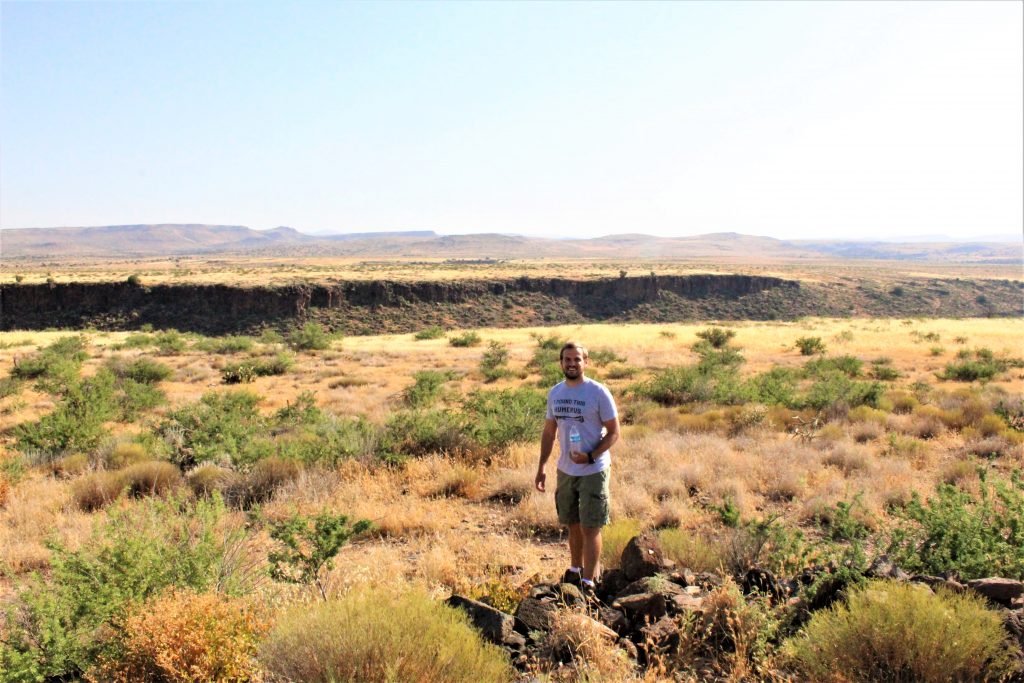
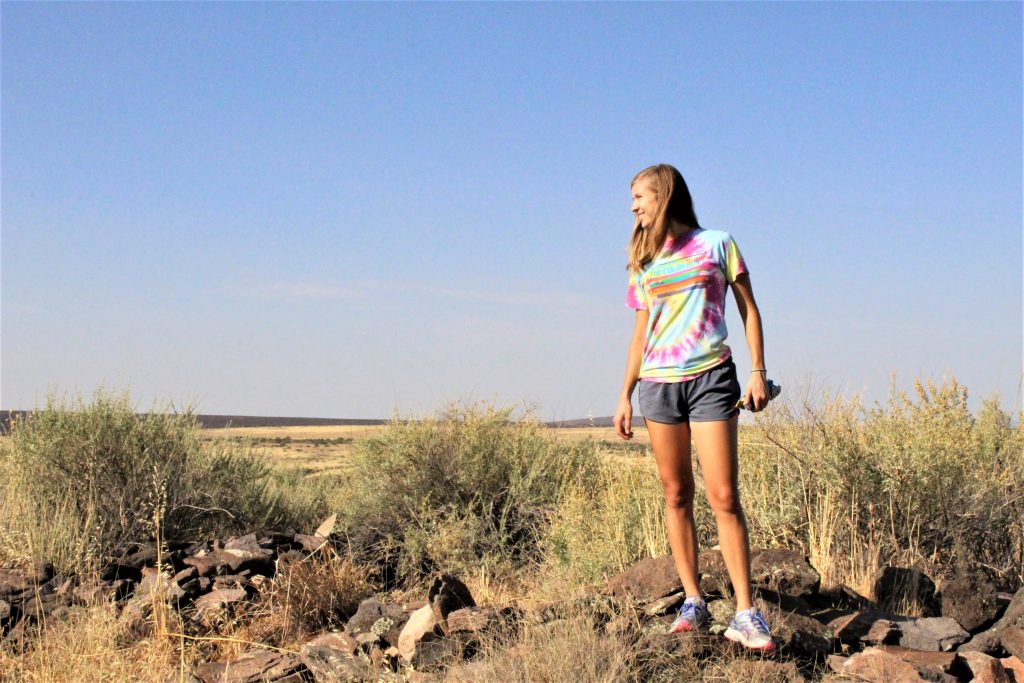
Source: Arizona State Parks
Book Your Stay near Agua Fria National Monument, Arizona
Search, compare and book hotels & rentals at the best prices that are sourced from a variety of platforms including Booking.com, Hotels.com, Expedia, Vrbo, and more. You can move the map to search for accommodations in other areas and also use the filter to find restaurants, purchase tickets for tours and attractions, and locate interesting points of interest!


Breana Johnson is an American expat living on the Caribbean Island of Sint Maarten. She surfs, snorkels, and spearfishes when she’s not tutoring local kids or writing. If she could have any job title in the world, it would be Professional Hummus Taste Tester. For now, she’s settling for freelance travel writer. You can catch up on Breana’s adventures at her blog, www.3rdCultureWife.com. PODCAST FEATURE Listen to Breana on St. Maarten Travels that Transformed Lives
